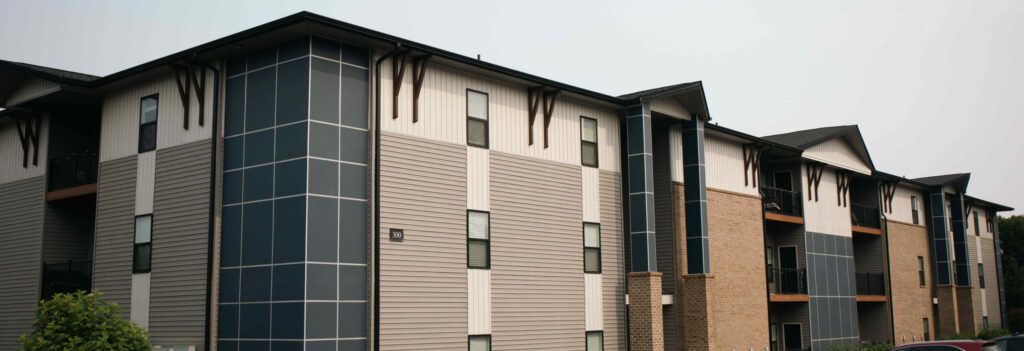Navigating Insurance Challenges in Affordable Housing: Rehabs vs. New Construction

Preserving existing affordable housing is a critical component of addressing America’s affordable housing shortage. However, affordable housing developers focused on rehabilitating, or “rehabbing,” older properties face many challenges beyond the risks associated with new construction.
Understanding Rehab Insurance Challenges
Compared to new construction projects, rehabbing affordable housing comes with a unique set of risk management and insurance challenges. Rehabs expose developers to heightened risks and, subsequently, higher insurance costs due to the complexities of simultaneously managing the property being rehabbed and the “existing structures,” e.g. any property not under construction (whether occupied or unoccupied).
Consider a scenario where a rehab is underway. If heavy machinery is used in proximity to the existing apartment buildings, it raises the potential for accidents or property damage. During occupied rehabs, the proximity of residents presents an added risk exposure not found in new construction projects. Additionally, elements like exposed copper wiring or other construction materials can serve as attractive nuisances for both residents and passersby. =
Many builder’s risk insurers simply refuse to cover the existing structures during a rehab, forcing owners to secure both a builder’s risk policy and standalone property coverage for the existing structures. This increases costs and can even lead to insurer disputes in the event of a claim if the insurers disagree on whose insured property was damaged.
Insurance Best Practices for Affordable Housing Rehabs
Being clear with your underwriter on exactly what property constitutes “existing structures” is essential for accurately assessing risks and securing the appropriate coverage, whether the owner is rehabbing entire buildings or individual units. In other words, your underwriter needs to know what property or units are under construction at any given point in time to ensure that specific property or unit is covered by your policy.
Appropriately structuring the builder’s risk coverage with a Permission to Occupy Endorsement and a “roll-off” schedule can help developers manage insurance costs during rehabs. This strategy effectively reduces the time that your property is placed on a builder’s risk policy, which typically would have higher rates than permanent property policies. Making sure your underwriter is aware of this construction timeline is essential to effectively managing risk during a rehab.
Additionally, affordable housing developers should pursue contractual risk transfer to their general contractors, and to the GC’s subcontractors, before the construction contract is finalized.
Owners should ask themselves the following:
Does my contractor carry sufficient liability limits?
Does the rehab construction contract contain appropriate hold harmless/indemnification language in favor of my legal entity?
Have I discussed with my contractor regarding whose policy covers existing structures?
Is my legal entity named on my contractor’s liability policy?
Communicating early and often with all parties (lenders, syndicators, contractors, insurance underwriters, etc.) will help you maintain a competitive edge when undergoing complex affordable housing rehabs.
While the need for rehabilitating existing affordable housing is staggering, thankfully many amazing organizations are working tirelessly to help our communities thrive by improving existing housing supply. The Scott Insurance Affordable Housing Practice Group partners with these organizations to help them build the best possible insurance and risk management strategies so they can focus on their missions of improving lives and communities.
Don’t forget to save the date for the two remaining sessions of our 2025 Affordable Housing Webinar Series:







